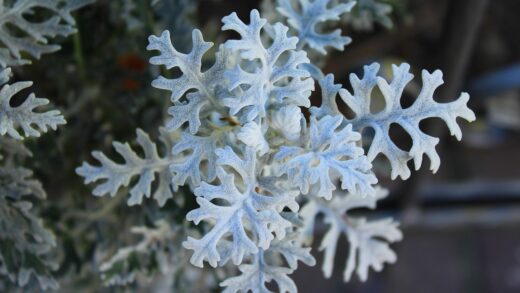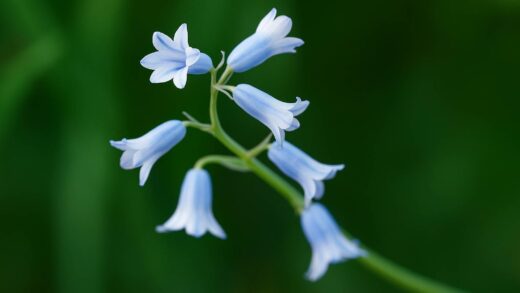When it comes to the nutrient requirements of cosmos, the guiding philosophy is one of minimalism. These vibrant annuals are a testament to the fact that not all plants crave rich, fertile soil to produce a spectacular display. In fact, cosmos actively prefer and perform best in soil that is average to even poor in fertility. This characteristic is a direct inheritance from their native habitats in Mexico and Central America, where they thrive in lean conditions. Understanding this fundamental preference is the key to avoiding common pitfalls and cultivating cosmos that are covered in flowers rather than just lush foliage.
The primary mistake that many well-intentioned gardeners make is to treat cosmos like other, more demanding garden flowers, such as roses or dahlias, by providing them with rich compost and regular applications of fertilizer. This approach, while beneficial for many plants, is counterproductive for cosmos. An excess of nutrients, particularly nitrogen, stimulates the plant to invest its energy into producing leaves and stems. The result is a tall, bushy, and verdant plant that produces very few, if any, flowers. This can be a source of great frustration for a gardener who expects a profusion of colorful blooms.
Therefore, the core principle of fertilizing cosmos is, in most cases, not to fertilize them at all. The average garden soil contains more than enough nutrients to support their growth and flowering throughout the entire season. These plants have adapted to be highly efficient at extracting the nutrients they need from less-than-ideal soils. By refraining from adding fertilizers, you are creating the slightly stressed conditions that encourage the plant to focus on reproduction, which, for an annual, means producing as many flowers (and potential seeds) as possible.
In the rare instances where the soil is exceptionally poor, such as in very sandy soils or newly developed landscapes where the topsoil has been stripped away, a very light feeding might be considered. However, this should be done with extreme caution and with the right type of fertilizer. The goal is to provide a gentle nudge, not a powerful push. For the vast majority of garden situations, the best approach to feeding cosmos is simply to prepare a well-drained bed and let the plants do what they do best: thrive on a bit of neglect.
Understanding the minimal nutrient needs of cosmos
Cosmos have evolved to be incredibly efficient at nutrient uptake, allowing them to flourish in soils where other plants might struggle. They have a modest requirement for the three primary macronutrients: nitrogen (N), phosphorus (P), and potassium (K). Nitrogen is responsible for green, leafy growth; phosphorus supports root development and flowering; and potassium contributes to overall plant health and vigor. The key for cosmos is that they need these nutrients in very balanced and limited quantities. Too much of any one, especially nitrogen, will throw their growth out of balance.
More articles on this topic
The preference for lean soil is not just a tolerance but an actual requirement for optimal flowering. When the soil is low in nutrients, it sends a signal to the plant that conditions are challenging. For an annual plant whose primary purpose is to reproduce within a single season, this signal triggers a strong flowering response. The plant “thinks” it must produce as many flowers and seeds as possible to ensure the survival of its species. This is a classic survival mechanism that gardeners can use to their advantage to get the most spectacular floral display.
This is why amending the soil before planting cosmos should be done with care. While adding compost to heavy clay soil is beneficial for improving its structure and drainage, you should do so sparingly. The goal is to improve the physical properties of the soil, not to significantly increase its nutrient content. If your soil is already of a good loamy consistency, there is no need to add any amendments at all. Resisting the urge to enrich the soil is one of the most important steps in successful cosmos cultivation.
Consider the natural environment of the cosmos. They grow in open fields and on roadsides where the soil has not been cultivated or regularly fertilized. By aiming to replicate these conditions in your garden—full sun, good drainage, and lean soil—you are providing the ideal foundation for healthy plants. This low-input requirement makes cosmos an incredibly sustainable and economical choice for the garden, as they do not demand expensive soils, composts, or a regular regimen of chemical fertilizers to look their best.
The risks of over-fertilization
Over-fertilization is undoubtedly the most common cause of poor flowering in cosmos. When these plants are supplied with an abundance of nutrients, especially nitrogen, their hormonal balance shifts. The plant’s energy is diverted away from the reproductive cycle (producing flowers and seeds) and into the vegetative cycle (producing leaves and stems). This results in a plant that may look incredibly healthy and green but fails to produce the very thing the gardener desires: a profusion of colorful blooms.
More articles on this topic
The visual signs of an over-fertilized cosmos plant are quite distinct. The plant will often be excessively tall and bushy, with dense, dark green foliage. The stems might be weak and floppy, unable to support the weight of the lush leaves, causing the plant to sprawl or break easily, especially in wind or rain. Most tellingly, you will see very few flower buds, or the buds that do form may fail to open properly. This imbalance is a direct consequence of providing too much nutritional support.
Beyond the disappointment of a flowerless plant, over-fertilization can lead to other problems. The resulting dense foliage can reduce air circulation through the plant, creating a humid microclimate that is more susceptible to fungal diseases like powdery mildew. Furthermore, the soft, lush growth encouraged by excess nitrogen is more attractive to sap-sucking insects such as aphids. So, by trying to “help” the plant with fertilizer, a gardener can inadvertently create a host of secondary health issues.
Correcting an over-fertilization issue mid-season is difficult. Once the nutrients are in the soil, they are available to the plant. The best course of action is to cease all fertilization immediately and ensure the plant is not being over-watered, as water can help transport nutrients to the roots. In some cases, a light pruning to thin out some of the foliage can help improve air circulation. However, the primary lesson is one of prevention. It is far easier to avoid over-fertilizing in the first place than to try to remedy its effects later.
Choosing the right type of fertilizer
In the specific and rare situation where your soil is extremely deficient and your cosmos plants are showing signs of nutrient stress (such as pale, yellowing leaves and stunted growth despite adequate water and sun), you may need to apply a fertilizer. When choosing one, it is absolutely crucial to select the right type. You must avoid high-nitrogen fertilizers at all costs. These are typically marketed as all-purpose plant foods or lawn fertilizers and will only exacerbate the problem of excessive foliage growth.
The ideal fertilizer for cosmos, if one is needed at all, is one that is low in nitrogen and higher in phosphorus. Phosphorus is the key nutrient that promotes the development of flowers, fruits, and roots. Look for a fertilizer with an N-P-K ratio where the middle number (P) is higher than the first number (N), for example, a 5-10-5 or a similar formulation. These are often sold as “bloom boosters” or flower fertilizers and are designed to encourage flowering rather than leafy growth.
Organic options are often a gentler and more suitable choice for cosmos. Bone meal is an excellent organic source of phosphorus and can be lightly scratched into the soil around the plants at the beginning of the season. Another option is a kelp-based liquid fertilizer, which contains a wide range of micronutrients and trace elements in addition to low levels of the main macronutrients. This can provide a gentle boost to overall plant health without overwhelming the cosmos with nitrogen. Always follow the application instructions and err on the side of using less than the recommended amount.
It cannot be stressed enough that fertilization should be the exception, not the rule. Before you even consider adding any fertilizer, ensure that all other growing conditions are optimal. Is the plant receiving at least six hours of direct sunlight per day? Is the soil well-drained and not waterlogged? Very often, issues that appear to be nutrient-related are actually caused by environmental factors. Only after you have ruled out these other possibilities should you cautiously consider a one-time application of a low-nitrogen, high-phosphorus fertilizer.
Application timing and methods
If you have determined that your extremely poor soil necessitates a fertilizer application, the timing and method of that application are critical. The best time to provide any supplemental nutrients is at the beginning of the growing season, either at the time of planting or shortly thereafter. This gives the plants a small initial boost to help them establish themselves without providing a continuous supply of nutrients that would later discourage flowering. A single, small application at the start of the season is all that should ever be required.
For granular fertilizers, such as bone meal or a commercial bloom-booster formula, the method is straightforward. Simply sprinkle a small amount on the soil surface around the base of the plants, being careful not to let the granules touch the stems directly, as this can cause them to burn. Then, gently scratch the fertilizer into the top few centimeters of soil with a hand cultivator or your fingers. Water the area well after application to help dissolve the granules and carry the nutrients down to the root zone.
For liquid fertilizers, such as a diluted kelp or fish emulsion, the application is even simpler. Dilute the fertilizer in a watering can according to the manufacturer’s instructions, or even at half-strength to be extra cautious. Then, use the mixture to water the soil around the base of the plants. This method provides nutrients in a form that is immediately available to the roots. As with granular types, this should be a one-time event early in the season. Never apply liquid fertilizer to dry soil, as this can damage the roots; water the plants with plain water first, then apply the diluted fertilizer solution.
It is crucial to avoid fertilizing cosmos at any other time during the growing season. Applying fertilizer in mid-summer, especially if the plants are not flowering well, is a common but misguided reaction. This will almost certainly have the opposite of the intended effect, signaling the plant to produce a new flush of leafy growth instead of flowers. The time for influencing the plant’s nutritional foundation is at the very beginning. Once the season is underway, your focus should shift entirely to providing adequate water, sun, and deadheading.
Organic approaches to feeding cosmos
For those who garden organically and have determined their soil is truly in need of a boost, there are several gentle and effective options that align with organic principles. One of the best approaches is to incorporate a small amount of well-rotted compost into the soil before planting. While compost is a source of nutrients, its primary benefit in this context is improving soil structure and drainage, especially in heavy clay. A light application will provide a slow release of a balanced range of nutrients without the nitrogen overload that synthetic fertilizers can cause.
Rock phosphate is another excellent organic amendment that can be beneficial for cosmos if a phosphorus deficiency is suspected. This is a natural mineral source of phosphorus that breaks down very slowly in the soil, providing a long, steady supply of this bloom-boosting nutrient without being overpowering. It can be worked into the soil at the time of planting and will support flower development throughout the season. Similarly, greensand can be used to provide a slow-release source of potassium and other trace minerals, which contribute to overall plant resilience.
Compost tea is a liquid organic option that can be used for a very gentle foliar feeding or soil drench early in the season. To make it, you steep a bag of high-quality compost in water for a day or two, creating a nutrient-rich liquid. This “tea” is then diluted and sprayed on the plants or used to water them. It provides a wide array of beneficial microorganisms and trace nutrients in a very dilute form, which can help improve plant health without promoting excessive vegetative growth. This is a much safer option than concentrated liquid fertilizers.
Ultimately, the best organic approach to the nutrient needs of cosmos is to focus on building healthy soil over the long term. This means avoiding synthetic chemicals, incorporating organic matter judiciously over time, and encouraging a healthy soil food web. A garden with healthy, living soil will naturally provide the balanced, minimal nutrition that cosmos crave. By focusing on the soil itself, rather than on directly feeding the plant, you create a sustainable and self-regulating system that benefits not just your cosmos, but your entire garden ecosystem.


















